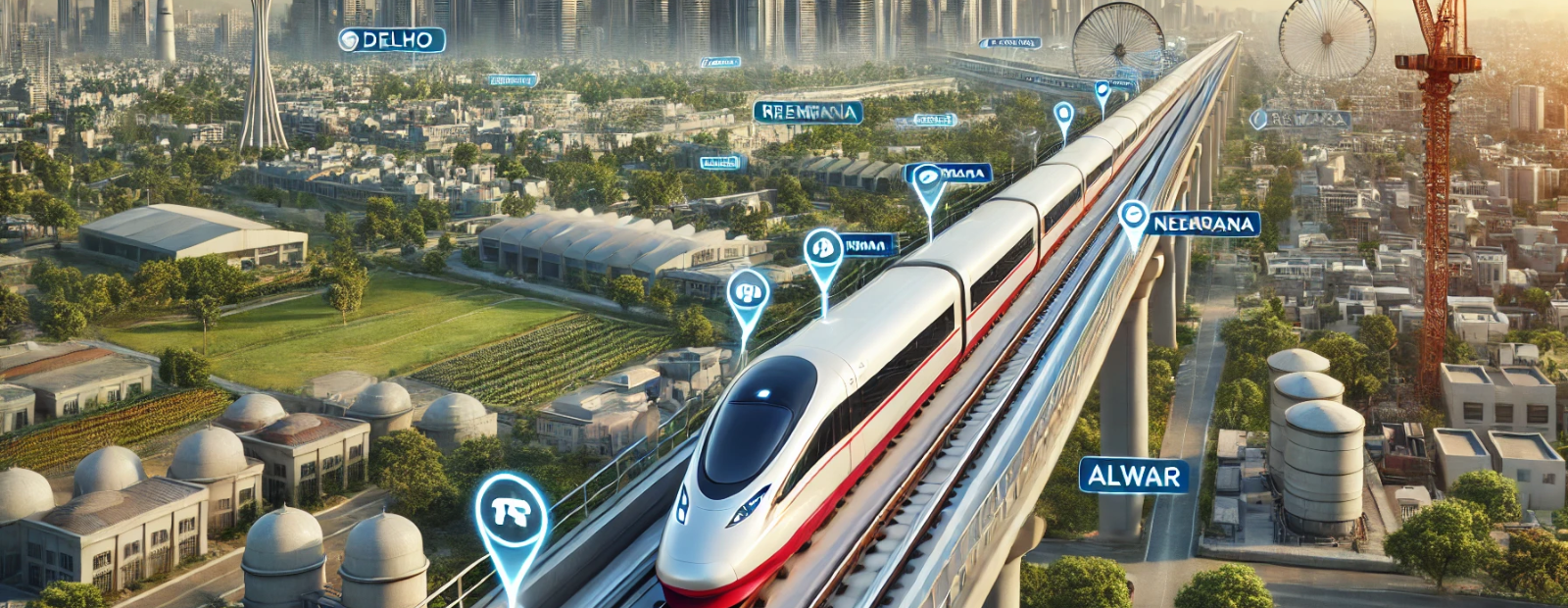
Introduction
The Delhi-Alwar Rapid Rail Corridor is set to revolutionize connectivity between Delhi and the surrounding regions. With construction expected to be completed in the next 2-3 years, the 164-kilometer stretch will allow commuters to travel from Alwar to Delhi in just 90 minutes, at a speed of 160 km/h. This project is a part of India’s long-term strategy to improve regional transportation, encourage economic development, and ease congestion in major metropolitan areas. Backed by the governments of Rajasthan and Haryana, this rapid train service is poised to become a crucial part of the National Capital Region's (NCR) infrastructure.
The Project Overview
The rapid rail corridor will span a total of 164 kilometers from Sarai Kale Khan in New Delhi to Alwar in Rajasthan. The train will stop at several key stations including Shahjahanpur, Neemrana, Behror, Bawal, and Daruhera, with a total of 22 stations along its route. This infrastructure initiative is expected to drastically cut down travel time between the two cities, bringing enormous benefits to residents and businesses.
This project is part of the Delhi-Gurgaon-Alwar RRTS (Regional Rapid Transit System), which aims to integrate various regions into a cohesive urban network, making transit easier and more efficient. The train will pass through significant areas in Haryana and Rajasthan, which will further boost the economic prospects of these states.
Stages of Development
The project will be executed in three phases:
First Phase: Delhi to Alwar The initial phase will connect Delhi to Alwar, linking key stops such as Gurgaon, Rewari, and Manesar. The work on this phase is in full swing, and it is expected to cater to a significant amount of passenger traffic as soon as it becomes operational.
Second Phase: Delhi and Nearby Regions The second stage will expand the rail connectivity to regions around Delhi, enhancing accessibility for more people living in satellite towns and urban extensions. This phase is designed to ease the pressure on existing road networks.
Third Phase: Expansion to Key Areas The final stage will link the corridor to other essential areas, including Shahjahanpur and Neemrana, with plans for further connections to Jaipur or Udaipur in the future.
Economic and Industrial Boost
The new rail corridor will play a crucial role in supporting the region's industrial and economic growth. Alwar, Bawal, and Neemrana are home to large industrial zones, and this rapid train service will provide the much-needed connectivity to Delhi and its nearby regions. Faster transportation means shorter commute times for workers, which in turn boosts productivity. Additionally, it will make these industrial areas more attractive for businesses, potentially leading to increased investments in infrastructure and industrial capacity.
The RRTS is also expected to facilitate the flow of goods between these regions, supporting industries that rely on rapid and efficient logistics. The economic ripple effect could also benefit the real estate sector, with commercial and residential development expected to grow near the station hubs.
Environmental and Urban Benefits
This project is not just about faster travel; it’s also aimed at reducing the environmental impact of transportation. By providing a reliable, high-speed alternative to road travel, the Delhi-Alwar Rapid Rail Corridor could significantly cut down the number of vehicles on the roads, reducing traffic congestion and air pollution in the NCR. It aligns with India’s broader efforts toward sustainable urban development, as the train will be an eco-friendly mode of transportation compared to conventional vehicles.
Another benefit is the reduction in commuter stress. With daily road congestion becoming an increasing problem in cities like Delhi and Gurgaon, the rapid train offers a comfortable, fast, and reliable alternative. This will improve the quality of life for commuters who no longer need to endure long hours stuck in traffic.
A Leap in Regional Connectivity
This rapid train system is a step toward more integrated urban planning in India. The connectivity boost will not only benefit commuters but also promote greater economic cohesion across states. Regions like Neemrana and Bawal, known for their industrial activities, will be more accessible to professionals and investors from Delhi. The RRTS will also integrate with other urban transport systems like metro networks, further expanding its reach and making multi-modal transport options more feasible.
Looking Ahead
As construction continues, anticipation for the completion of the Delhi-Alwar Rapid Rail Corridor is growing. The combined efforts of the Delhi, Haryana, and Rajasthan governments underscore the importance of this project in transforming urban transportation. Once operational, it will mark a significant milestone in India's journey toward modern, efficient, and environmentally friendly public transportation.
The success of this project will likely encourage the development of similar rapid rail corridors in other parts of the country, setting a new benchmark for urban connectivity. Whether you are a commuter, a business owner, or an investor, the Delhi-Alwar Rapid Rail Corridor promises to open up a range of new opportunities.
Conclusion
The Delhi-Alwar Rapid Rail Corridor is not just a transportation project; it is a catalyst for regional development, urban sustainability, and economic growth. As India continues to modernize its transportation infrastructure, this rapid train service is poised to change the way people live, work, and commute in the NCR and beyond. The future of connected cities is fast approaching, and this project is a giant leap in that direction.